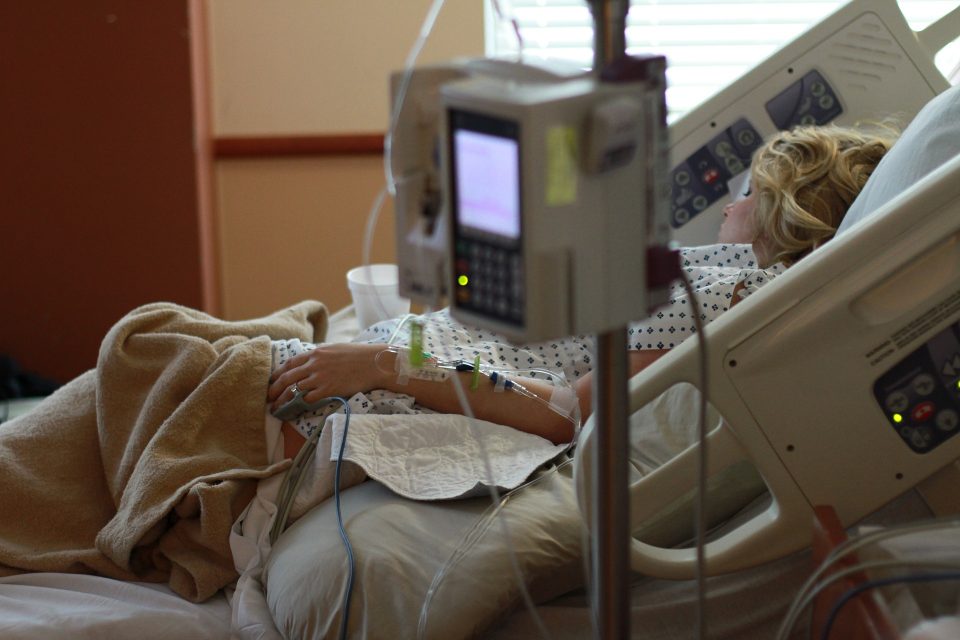Medical Assistance in Dying, or MAiD, was first legalized in Canada in 2016. At first glance, it may have seemed that this legislation, while an important step in Canadian medical care, would have fairly little impact on our practice in the Emergency Department (ED). However, as the ED is the catch-all for patients from all backgrounds, with all illnesses, and in all stages of life, it became inevitable that the effects of MAiD would soon be felt in our practice. To this end, ED physicians and first-line care providers should have a basic understanding of the MAiD legislation, how MAiD can be accessed, and have an approach to some of the complications of MAiD that we might face in our practice. If you don’t yet have that understanding, then fear not — keep reading!
MAiD Primer: What ED Docs Need to Know
Definitions
MAiD is an umbrella term, which encompasses both Assisted Suicide and Euthanasia. Assisted suicide is the act of intentionally killing oneself with the assistance of another who provides the knowledge, means, or both. The most common scenario here would be a physician writing a prescription for lethal doses of oral medications, usually a combination of barbituates and morphine, and the patient self-administering those medications at the time and place of their choosing. Voluntary euthanasia, on the other hand, refers to the direct administration of medications by a physician to a patient, with their consent, and with the intention of causing death to end suffering.
The Background
MAiD was first legalized in Canada on June 17, 2016. While it is a fairly new concept for us, it has existed in many other countries for decades. The experiences of other nations continue to be an important source of guidance for us as we navigate some of the controversies and challenges that come about with the introduction of MAiD.
In the first year of MAiD legalization, there were 1982 medically assisted deaths in Canada. As of March 31, 2018, there have been 1352 completed cases of MAiD in Ontario alone. Nearly all of these cases have been by means of clinician-administered MAiD (voluntary euthanasia), and the vast majority of these were in patients with oncologic or cardiorespiratory diagnoses.
Eligibility Criteria
As it stands, to be eligible for MAiD, a patient must meet the following criteria:
- At least 18 years old
- Capable of making decisions with respect to their health
- Have a grievous and irremediable medical condition, defined as:
- Having a serious and incurable illness, disease, or disability
- Being in an advanced state of irreversible decline in capability
- Enduring physical or psychological suffering, caused by the medical condition or state of decline, that is intolerable to the person, or
- Natural death has become reasonably foreseeable
- Has made the request voluntarily
- Has provided informed consent to receive MAiD (after being informed of alternate options, including palliative care)
- Is eligible for publicly funded health services in Canada
You’ll note that some of these criteria, for example that a medical condition is “grievous and irremediable” or that natural death is “reasonably foreseeable” are somewhat vague and open to interpretation. This has been a source of much of the controversy around these eligibility criteria.
Cases of Controversy
So how will all of this affect you in the ED? Let’s get into some examples.
Case 1: The request for MAiD in the ED
A 92 year old female from a nursing home, with multiple end-stage comorbidities, presents to the ED after a fall. She is wheelchair-bound at baseline due to severe arthritis, you’ve just diagnosed her with a hip fracture. As she waits for Ortho to come see her in the ED, she asks you, “Can’t you just put me to sleep and end this so I can move on?” How do you respond?
With the increasing public discourse around this issue, many of us will be faced with questions about MAiD and how to access it. In fact, a survey of our ED earlier this year demonstrated that 40% of respondents said they had received a direct inquiry about MAiD from a patient in their ER practice.
So how should we respond to these requests? First and foremost, it is essential that we ACKNOWLEDGE these kinds of questions from patients — even when it isn’t the main reason for an ED visit, these moments present an opportunity for a crucial conversation. Next, try to understand WHY this has come up today. Is there an underlying issue that has not been addressed? Is there depression, untreated pain, or poorly managed symptoms that are driving this sentiment? Has this patient been in touch with palliative care, and has that part of their care been optimized? Many patients have a somewhat incomplete or blurred understanding of comfort care, palliation, MAiD, and how those things relate to one another and to them; so it’s essential to understand what they really mean when they voice a desire to die.
However, if you do find yourself faced with a rational, serious request for MAiD in the ED, you should also be prepared to address that request. Take the time to familiarize yourself with the referral process in your centre — whether there is a hospital-based referral centre, or a telephone “hotline” where referrals can be directed, it is essential that you be equipped with this knowledge in the event of a request. Remember that at under the current MAiD laws, while there is no obligation to perform MAiD, there is a legal obligation to provide referral for the service if asked.
Case 2: The Case of Failed MAiD
An elderly patient is brought from home with EMS. His wife accompanies them, telling you that he has end-stage renal failure, and was approved for MAiD. She came home from grocery shopping and found him partially conscious and gasping for breath in bed, with the empty MAiD pill bottles at his side. Panicked and unsure what to do, she phoned 911. How do you approach treatment of this patient?
While these cases are very rare, it is foreseeable that as more patients choose to self-administer MAiD at home, we may see patients presenting to the ED after incomplete or delayed onset of death after taking their MAiD medications. These cases are difficult and emotionally distressing for physicians, patients, and families. However, the basic principles of the care we provide from the ED do not change.
We confirm goals of care, we confirm the desire for no resuscitative measures, and then we palliate. There is no role or legal provision for us to take steps from the ED to hasten death, even for a patient approved for MAiD. However, acting within our scope of practice as ED physicians, we can provide comfort care, analgesia, and emotional / spiritual support to patients and their families in their last hours of life.
Case 3: The Patient Who Gets Sick Before MAiD
A 60 year old female with stage 4 lung cancer arrives to the ED with EMS. She was just approved for MAiD, with a date set for intravenous euthanasia a few days from now. However, in the interim, she has become febrile and more short of breath with decreased level of consciousness. With EMS, she has been hypoxic, dyspneic, and required BVM on route. The patient’s husband, seeing her suffering, asks, “Can’t you just end this now?”
This is a potentially more common and equally distressing scenario for patients, physicians, and family members than our previous case. However, as in our last case, we must continue to provide care within our scope of practice as ED physicians. Once again, there is no provision to allow for us to hasten death in the ED, even in a patient already approved for MAiD. Therefore, we would again confirm goals of care and provide comfort care and palliation to support this patient through the end of her life.
Case 4: The Suicide Attempt in an End-of-Life Patient
A 70 year old female with advanced oral cancer has had limited response to chemotherapy and her GP informs her that she will likely require a feeding tube. She expresses that she is not improving with therapy and has no quality of life any more. She inquires about MAiD. Her GP feels that she would not be eligible at this time and there are more options to explore first. The patient returns home and takes an entire bottle of her morphine tablets. She is found by her daughter, who activates EMS, and she is brought to your ED. Do you resuscitate this patient?
These types of cases are among the most challenging cases that we may see in the ED. There is no one-size-fits-all approach to a case of such moral and ethical ambiguity; but rather, there are some basic principles that we can use to guide our approach to each individual patient.
The first principle is to always stay within your scope of practice. This may sound obvious, but when faced with these ethically challenging cases, we may feel tempted to act outside of our usual practice in order to accommodate a patient or family member in distress. Remember that the legalization of MAiD does not change our principles of practice in the ED. Rather, for any sick patient, our usual practice would be to try to confirm goals of care, either from the patient or an SDM, and then work within our scope of practice to honour that. That principle still holds true in these cases. As long as we have reason to believe that the patient’s prior wishes to withhold resuscitation were expressed at a time when they had capacity, and were a result of rational thought, rather than depression or coercion, then our responsibility would be to uphold those wishes, and offer palliation and comfort care.
The second principle is to remember that the decision to “resuscitate” is not an all-or-nothing decision. “Resuscitation” can look very different depending on the situation and for a given patient some steps may be more appropriate than others.
- For example, for one patient, resuscitation might require intubation, central lines, surgery, and a very long and painful recovery process. In another patient, like the one in this case example, resuscitation might be as non-invasive as a narcan infusion and some BVM ventilation. In cases like this, where the patient’s expressed wishes are somewhat unclear, perhaps some forms of resuscitation, until collateral information can be gathered and care options can be more thoroughly explored, would be a reasonable choice. While it’s cognitively easier to make a dichotomous decision to either “palliate” or “resuscitate,” those two options should not be mutually exclusive. Each treatment option should be considered individually in the context of that patient’s situation.
The third and final principle is to remember to ask for help. These are inherently ethically, legally, and morally complex situations, and no one person should carry the entire burden of decision-making in these cases. Remember that you can access Ethics, Palliative Care, and MAiD physicians to help you navigate these cases. Recognize that patient families are also navigating unknown territory in these cases, so the additional support offered to them through social workers, spiritual care, and their own MAiD physician can be invaluable to their mental and emotional state. Remember that while we are physicians, we are also humans with our own sets of morals and beliefs, and these cases are often far too complex to distance ourselves from them entirely. Dealing with these cases may bring up very personal feelings about death and dying, and in some cases, we may have to act outside of what we feel is right or best, in order to respect the autonomy of a patient or their loved ones. Do not underestimate the toll that this may take on you. Take the time to reflect on these cases, share with colleagues or your loved ones, and access the mental health supports available to you.
Summary
These are complex topics that no one person has all the answers to; each individual patient, presentation, and physician will require a different approach. As this national conversation continues, and our experience with MAiD increases, the approach to these topics may evolve. However, if you remember to:
- Always work within your scope of practice
- Approach the decision to resuscitate or palliate as a continuum, rather than a dichotomy, and
- Ask for help
Then you will be well equipped to develop a safe and ethical approach to any challenging scenario that you might face. More importantly, you will be able to provide compassionate, thoughtful care to your patients in the last hours of their lives.
The most difficult moments of our job are the times we tell patients there is nothing more that we can do to help them live. But perhaps one of the most powerful things we can do is to help a patient die, and die well — with dignity, autonomy, and comfort.
References
- Bakewell, F. Medical Assistance in Dying (MAID) in the ED: Implications for EM Practice. 2016. Web access: May 15, 2018. canadiem.org/medical-assistance-dying-maid-ed-part-ii/
- Bakewell, F. Medical Assistance in Dying (MAID) Part 1. 2016. Web access: May 15, 2018. canadiem.org/medical-assistance-dying/.
- Butler, M. et al. Euthanasia and Assisted Suicide in Canada. Parliament of Canada. 2013. Web access: May 15, 2018. parl.ca/content/lop/ResearchPublications/2010-68-e.htm.
- Canadian Society of Palliative Care Physicians. CSPCP Position Statement on Euthanasia and Assisted Suicide. February 6 2015. Web Access: May 21, 2018. cspcp.ca/wp-content/uploads/2014/10/CSPCP-Position-on-Euthanasia-and-Assisted-Suicide-Feb-6-2015.pdf.
- Harty, C. et al. The Oral MAiD Option in Canada Part 1: Medication Protocols Review and Recommendations. Web Access: May 17, 2018. www.camapcanada.ca/OralMAiD-Med.pdf.
- Medical Assistance in Dying in Canada: 2nd Interim Report. Government of Canada. September 2017. Web access: May 11, 2018. canada.ca/content/dam/hc-sc/documents/services/publications/health-system-services/medical-assistance-dying-interim-report-sep-2017/medical-assistance-dying-interim-report-sep-2017-eng.pdf.
- Medical Assistance in Dying: Policies and Publications. College of Physicians and Surgeons of Ontario. 2016. Web access: May 11, 2018. cpso.on/ca.Policies-Publications/Policy/Medical-Assistance-in-Dying.
- Ontario Establishing Care Coordination Service to Support Patient Access to End of Life Options. Ontario Ministry of Health and Long-term Care Health Bulletins. Web access: May 11, 2018. www.health.gov.on.caen/news/bulletin/2017/hb_20170529.aspx.
- Oregon Death with Dignity Act: Data Summary 2016. Oregon Health Authority Public Health Division. Web access: May 11, 2018. www.oregon.gov.proxy.bob.uottawa.ca/oha/PH/providerpartnerresources/evaluationresearch/deathwithdignityact/documents/year19.pdf.
- Wang, D. No Easy Way Out: A Case of Physician-Assisted Dying in the Emergency Department. Annals of Emergency Medicine. 2017. Web Access: May 13, 2018. elsevier.com/retrieve/pii/S0196064417315408.




